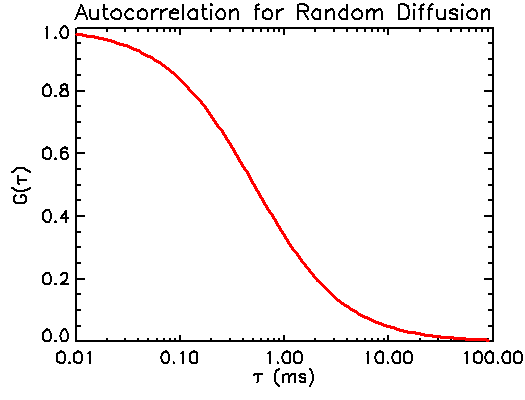
For a sample of randomly diffusing fluorescent particles excited by a Gaussian beam profile the autocorrelation function decays as shown above. The characteristic decay time of the autocorrelation function is the point at which the function has decayed to half its maximum value. This decay time is determined by the diffusion coefficient of the molecules and the beam waist of the point spread function illuminating the sample. Upon calibration of the beam waist using a dye with a known diffusion coefficient, the diffusion time of the fluorescent molecules can be determined.
The amplitude of the autocorrelation function is related to the average number of particle moving through the illumination volue in which two-photon excitation occurs. Using a volume factor defined by the illumination profile of the point spread function, the concentration of the fluorescing molecules can be determined.